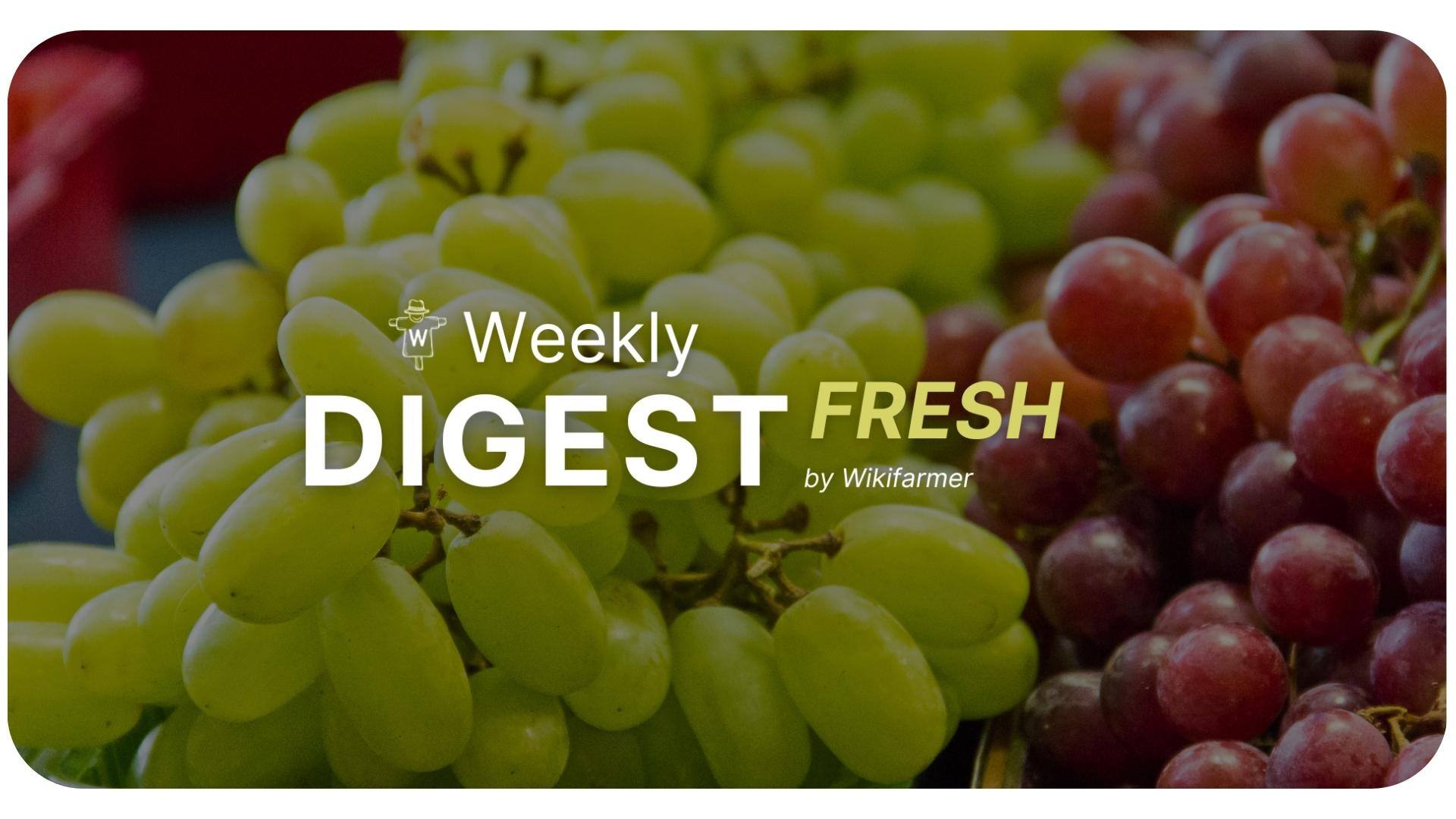Grapes Market Digest w38

Weekly updates on the grapes market
Price movements in the EU
As we reach mid-September, the market is typically abundant with various grape varieties from key producers like Italy, Spain, and Greece, all in peak season. However, this year, challenging weather conditions have led to reduced supply, opening the door for third-party countries to import grapes into the EU wholesale fresh market earlier than usual. In terms of pricing, there has been general stability, with no significant fluctuations, as observed in our data at Wikifarmer and from valuable sources like German Federal Ministry of Food and Agriculture and the French Market News Network.

In Central European wholesale markets, supplies from Italy, as the leading producing country, have intensified once again, dominating an overall diverse assortment. The Italia variety is becoming increasingly prominent, with Crimson Seedless and Red Globe also seeing a rise in availability. In contrast, the supply of Michele Palieri and Victoria has slightly decreased. Turkish Sultana grapes have played a significant role in Munich and have become slightly cheaper due to increased volume. In Hamburg, Turkish Crimson Seedless was priced at €19 per 5 kg carton. Prices generally remained stable as supply and demand remained well-balanced.

It has been reported that at the European level, France, Italy, and Portugal will continue to supply the market till the end of the season. However, due to the unusual start of harvesting three weeks earlier, it expected a shortage of white grapes in the market in November, which could lead to early increased grape imports.
The ups and downs of the Greek grape sector
Greek grape production has dropped significantly this season, with overall volumes estimated to be 30% lower than in previous years, and Crimson grapes particularly hard-hit with a 50% reduction. The stakeholders reported that the primary cause is extreme weather, including two mild winters and an exceptionally hot, dry summer. Despite lower availability, suppliers are focused on maintaining exports, particularly to the UK, which accounts for 70% of the production volume, while continuing efforts to expand into overseas markets.
To address weather challenges, reforming grape varieties includes fruits that are more productive, resilient to weather, and require less labor. Greece's reliance on older varieties like Thomson Seedless has affected its competitiveness, but the transition to newer varieties is underway. Although production remains limited, prices are expected to increase this season due to reduced supply in Greece and other Mediterranean countries.
-jpg.jpeg?width=757&height=1594&name=Untitled%20design%20(28)-jpg.jpeg)
In addition, another variety like Greek Pristine grapes are set for an early harvest this year, beginning in late September, with significant volumes expected by early October. Despite the climate challenges that have heavily impacted other grape varieties, a producing company in Kilkis which includes licensed Pristine growers in Greece, anticipates achieving 85% of normal production. The earlier-than-usual harvest, driven by the summer heat, marks a notable shift from last year’s crop, which started at the end of October.
Meanwhile, the issue of illegal Pristine plantations has gained attention, with a landmark court ruling leading to the uprooting of unauthorized vineyards in Kavala. Legal actions are escalating, with law firms pursuing lawsuits against offenders across Greece. The widespread illegality in the cultivation of registered plant varieties faces sluggish enforcement of regulations, but efforts are underway to combat these violations. The case highlights the challenges of protecting intellectual property in agriculture, with calls for stricter enforcement of EU regulations.
.png?width=450&height=87&name=New%20Logo%20(1).png)